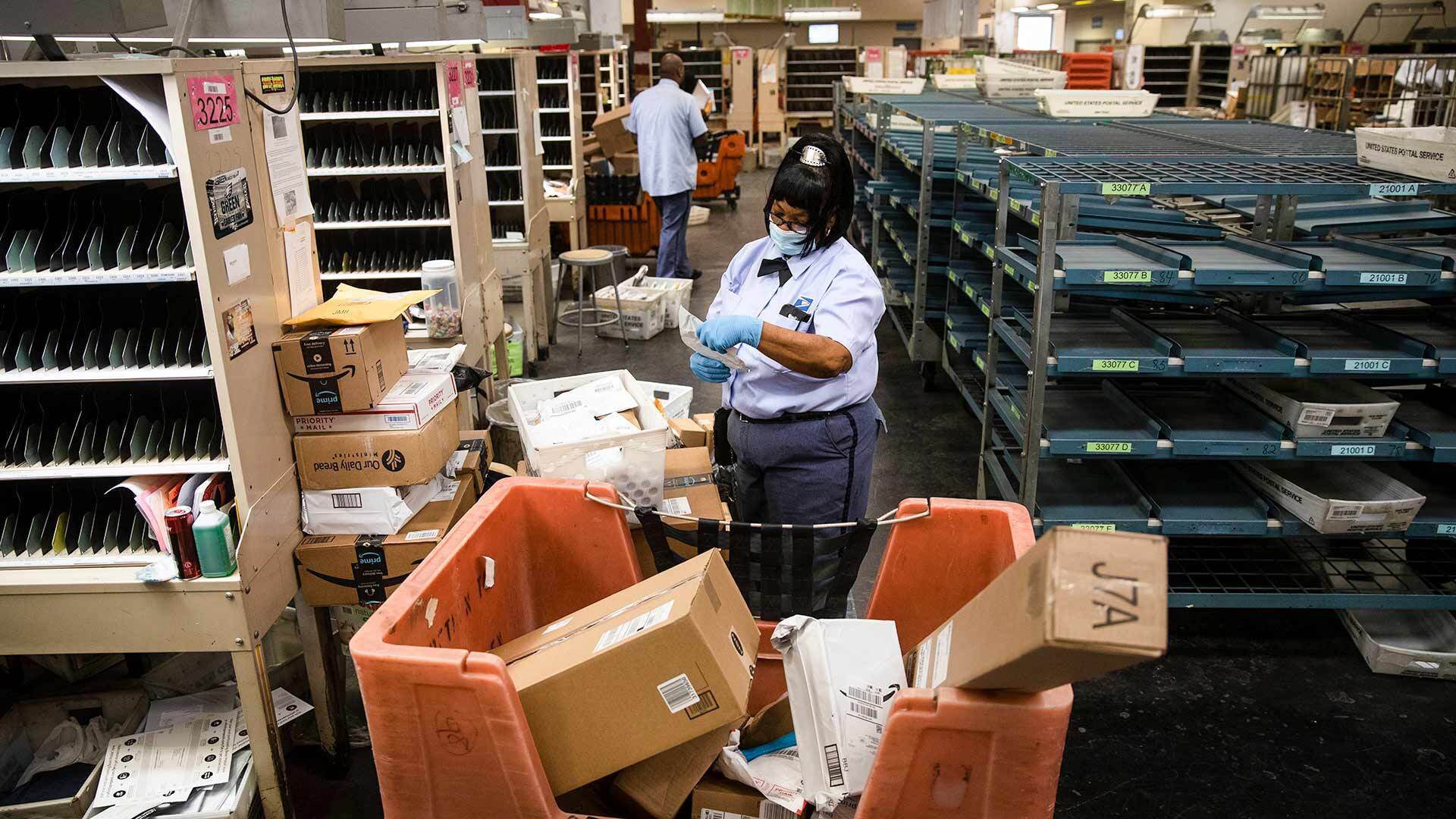- September 28, 2020
- By Liam Farrell
Neither snow nor rain nor heat can stop mail delivery, according to the old saying, but the U.S Postal Service has never before been under fire like this.
Recent staffing cuts and the decommissioning of mail sorting machines have fueled complaints and tense congressional hearings about delays. Now the Postal Service, one of America’s most taken-for-granted institutions, is facing unusual scrutiny heading into a pandemic-era election when millions more than usual plan to vote by mail.
These tensions appear in a new Washington Post-University of Maryland poll, where more than half of respondents said they’ve noticed mail is taking longer to arrive than it did last year. It’s a situation that clearly bothers Americans, with a majority in the poll saying the USPS should be run as a “public service” regardless of whether it can turn a profit.
Maryland Today reached out to Philip Evers, an associate professor of logistics management at the Robert H. Smith School of Business, for some background on the U.S. Postal Service and its unique financial and operational pressures.
It’s partially a monopoly.
With the first article in the U.S. Constitution giving Congress the authority to establish post offices and post roads, the USPS maintains sole power to access mailboxes and deliver first-class, residential mail. A lot of infrastructure and personnel comes with that: 30,000 post offices, 600,000 employees, 200,000 vehicles and a mechanical legion of sorting machines.
“The postal service is the one organization that goes to practically every address in the country,” Evers said. “That’s an expensive business.”
But its core business is declining.
Since peaking in the early 2000s, when the Postal Service delivered about 103 billion pieces of first-class mail, volumes have plummeted due to the rise in email and other internet communication and commerce. Last year, according to the Postal Service, it delivered about 55 billion.
But just because an address gets 25 pieces of mail a week now rather than 50 doesn’t mean the Postal Service can decide to abandon delivery there. The obligations, and the employees and infrastructure needed to meet them, stay largely the same.
“There are these huge fixed costs,” Evers said.
And it has heavy financial burdens.
The structure of USPS has changed a lot in the last few decades. In 1970, it was turned into an independent federal agency in order to create a “more business-like” operation, Evers said, and limit political patronage in job appointments. Then, in 2006, Congress required the Postal Service to prepay 75 years’ worth of retiree benefits—the sole federal agency made to do so—and sent USPS into what is now more than $160 billion of debt.
“Ever since then, they’ve been incurring these tremendous losses. They’re hamstrung,” Evers said, noting USPS had already announced it was going to be lengthening mail service times long before the pandemic struck. “I would argue they have been trying to do the best they can.”
It’s also competing with private businesses.
While first-class mail is a USPS monopoly, express and overnight deliveries and packages are another matter. That’s where competitors like UPS, FedEx and Amazon join the fray.
It’s something of a double-edged sword, Evers said; while that means the Postal Service has to fight for a big slice of the market, its comprehensive reach to American homes means private businesses often rely on a postal worker to do the “last mile” of a delivery.
“If Amazon is giving it to the Postal Service, that suggests to me that the Postal Service is doing it either better or cheaper,” he said, although exact financial terms of such arrangements have remained confidential. “Final-mile service might be better since the Postal Service visits each address every day or it might be cheaper if the Postal Service is charging less for deliveries, or possibly a combination of the two.”
And should—should—be able to handle mailed ballots.
Just like Amazon struggled to keep up its regular Prime delivery windows in the early days of the pandemic, Evers said, “it’s not a surprise” USPS is running slower. Whether it spells disaster for a presidential election when many more ballots will be mailed than normal, however, is another question.
“I would think that the Postal Service could handle it,” Evers said, noting that ballots won’t be mailed all at the same time. “I give the Postal Service the benefit of the doubt in that they can anticipate how many ballots will go out.”
But the thing about logistics, he said, is that the postal service is just one part of the process. Just as a delay at the Amazon warehouse can make it look like the mail carrier is falling down on the job with your expected package, the Postal Service is just one link in the chain before a ballot actually gets counted.
“Customers don’t have insight into the process,” he said. “It’s often hard to tell from the outside who is responsible.”
